How to Find the Volume and Surface Area of a Triangular Pyramid?
In this step-by-step guide, you learn how to use formulas to find the volume and surface area of a triangular pyramid.

A three-dimensional shape whose four sides are triangular is known as a triangular pyramid. Triangular pyramids are irregular, regular, and right-angled.
Related Topics
A step-by-step guide to finding the volume and surface area of the triangular pyramid
A triangular pyramid is a three-dimensional shape in which all faces are triangular. It is a pyramid with a triangular base connected by four triangular faces in which \(3\) faces meet at a vertex. If it is a right triangular pyramid, the base is a right-angled triangle and the other sides of the triangle are isosceles.
Types of the triangular pyramid
Like any other geometric shape, triangular pyramids can be classified into regular and irregular pyramids.
Regular triangular pyramid
A regular triangular pyramid has equilateral triangles. Since it is made of equilateral triangles, its interior angles are \(60\) degrees.
Irregular triangular pyramid
Irregular triangular pyramids also have triangular faces, but they are not equilateral. The internal angles in each plane add up to \(180°\) due to the triangle. Unless a triangular pyramid is mentioned explicitly as irregular, all triangular pyramids are assumed to be regular triangular pyramids.
Right triangular pyramid
The right triangular pyramid has the base of the right triangle and its apex is located above the center of the base. It has \(1\) right-angled base, \(6\) edges, \(3\) triangular faces, and \(4\) vertices.
Properties of a triangular pyramid
A triangular pyramid feature helps us identify a pyramid from a set of specific shapes quickly and easily. The different properties of a triangular pyramid are:
- A triangular pyramid has \(4\) triangular faces, \(6\) edges, and \(4\) vertices.
- \(3\) edges meet at each of its vertexes.
- A triangular pyramid has no parallel faces.
- A regular triangular pyramid has equilateral triangles for all its faces. It has \(6\) planes of symmetry.
- Triangular pyramids can be regular, irregular, and right-angled.
Triangular pyramid formulas
There are various formulas used to calculate the volume and area of triangular pyramids. See the following figure to relate to the formulas given below:
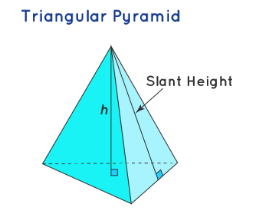
We can calculate the volume of a triangular pyramid with this formula:
\(\color{blue}{Volume\:of\:Triangular\:Pyramid\:=\:\frac{1}{3}\:×\:Base\:Area\:×\:Height}\)
Where we multiply the area of the triangular base by the height of the pyramid (measured from the base to up) and then divide the result by \(3\) according to the formula.
We can calculate the total area of a triangular pyramid by this formula:
\(\color{blue}{Total\:Surface\:area\:of\:a\:Triangular\:Pyramid\:=\:Base\:Area\:+\:\frac{1}{2}\:\left(Perimeter\:of\:the\:base\:×\:Slant\:Height\right)}\)
where slant height is the distance from its triangular face along the center of the face to the apex.
Finding the Volume and Surface Area of the Triangular Pyramid – Example 1:
Find the volume of a triangular pyramid having a base area of \(15\space cm^2\) and a height of \(6\space cm\).
Solution:
Using this formula to find the volume of a triangular pyramid:
\(Volume=\frac{1}{3}×\:Base\:area\:×\:Height\)
\(= \frac{1}{3}× 15 × 6\)
\(=\frac{90}{3}\)
\(= 30\space cm^3\)
Exercises for Finding the Volume and Surface Area of the Triangular Pyramid
Find the volume and surface area for each triangular pyramid.
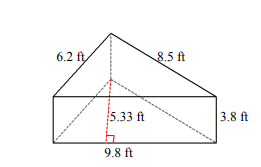
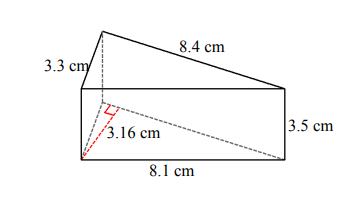
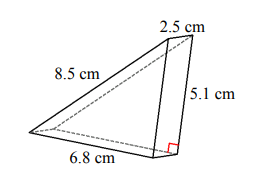
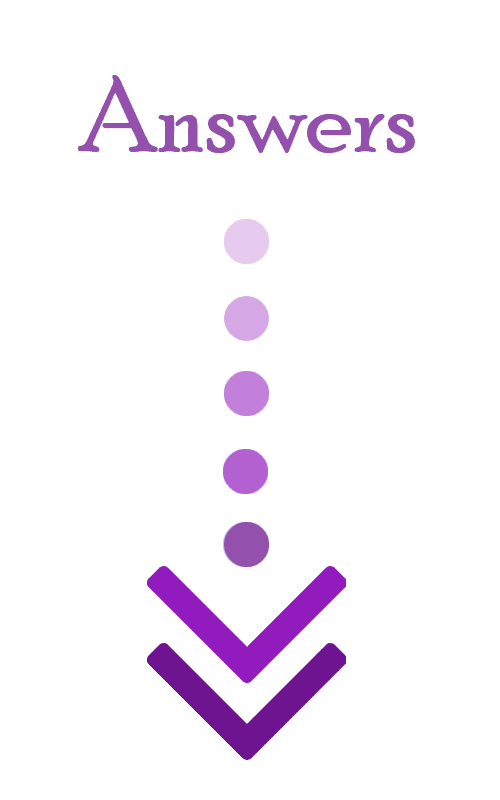
- \(\color{blue}{V= 99.2\space ft^3, A= 145.3\space ft^2}\)
- \(\color{blue}{V= 46.5 \space cm^3, A=95.8\space cm^2}\)
- \(\color{blue}{V=43.4 \space cm^3, A=85.7\space cm^2}\)
Related to This Article
More math articles
- Money and Decimals Relation: A Step-by-Step Guide
- ParaPro Math Practice Test Questions
- How to Identify Statistical Questions
- Top 10 Tips You MUST Know to Retake the ISEE Math
- How to Add Mixed Numbers? (+FREE Worksheet!)
- How to Solve Systems of Equations with Substitution?
- Calculus: Navigating the Pathways of Particles
- Unlocking the Mystery: How to Add Fractions with Different Denominators Using Visual Models
- How to Compare Decimals? (+FREE Worksheet!)
- How long is the SAT Test?



















What people say about "How to Find the Volume and Surface Area of a Triangular Pyramid? - Effortless Math: We Help Students Learn to LOVE Mathematics"?
No one replied yet.